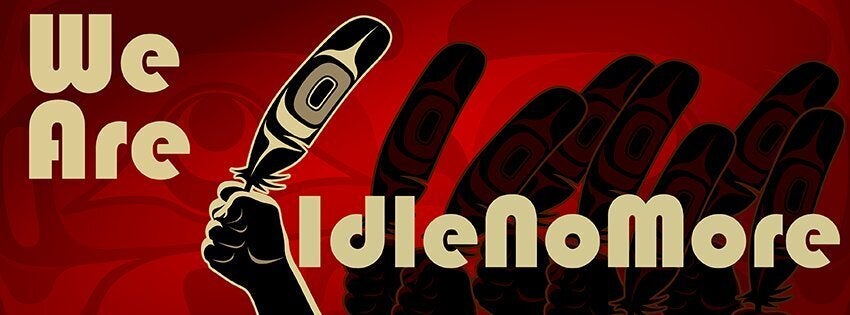EDITOR’S NOTE: This story has been updated since its original publication in 2015.
National Indigenous Peoples Day, formerly known as National Aboriginal Day, arrives in Canada on June 21. It’s a chance for Canadians to celebrate the culture and achievements of First Nations, Inuit and Metis people.
We’re celebrating the occasion by highlighting some stunning Indigenous art from across the country.
The art comes in many forms, from sculpture, to paintings and prints. It taps all kinds of influences, from traditional forms to pop culture.
It has achieved international renown, and occupies prominent places in Canadian society.
Two of Bill Reid’s sculptures, for example, adorn Canada’s $20 banknote. Brian Jungen’s designs, famous for using sports paraphernalia, have been shown throughout the world, from Vancouver to Sydney.
And those are just a few examples of artworks that express the culture, the history and the voices of people who have lived on this land since time immemorial.
Here are 15 stunning examples of Indigenous art from across Canada:
Susan Point — “Tree of Life”
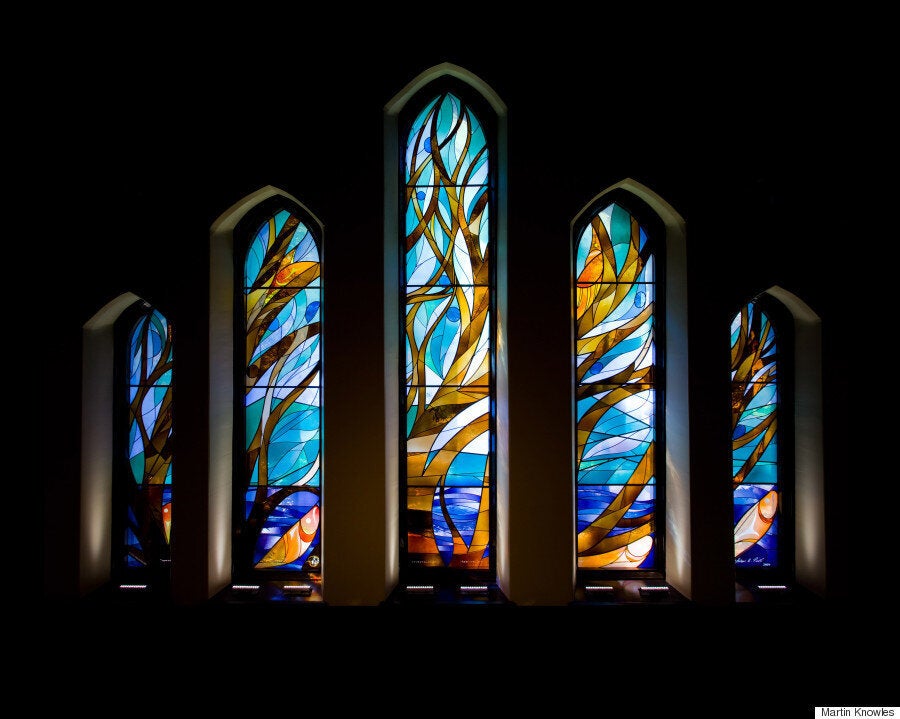
(Image courtesy of Martin Knowles, Christ Church Cathedral Vancouver)
This gorgeous stained-glass window, by B.C. Musqueam artist Susan Point, can be found at Christ Church Cathedral in Vancouver. It depicts a tree supporting life such as salmon and birds, and is a tribute to the beautiful landscape the church occupies.
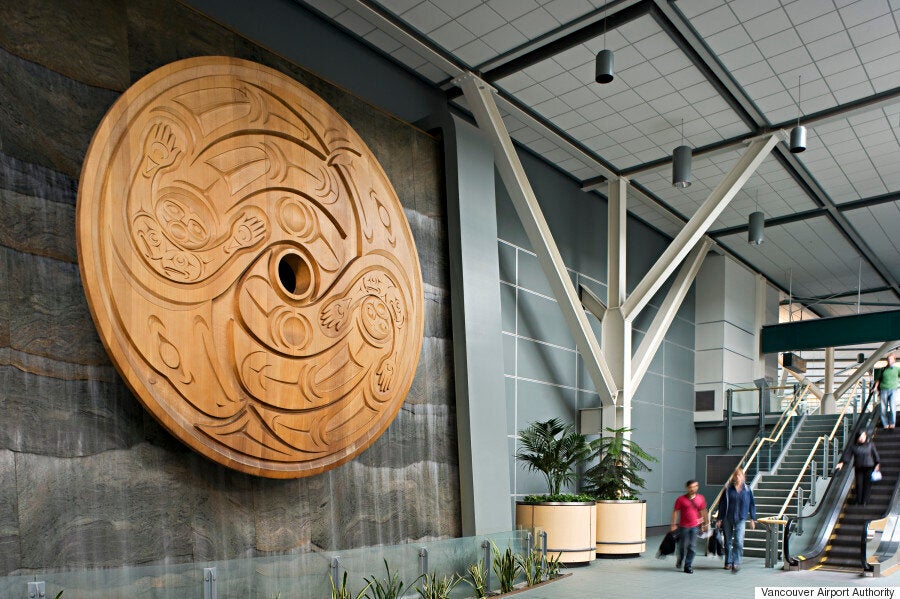
(Image courtesy of Vancouver Airport Authority)
The world's largest spindle whorl greets passengers arriving in Vancouver from all over the world. Set against a background featuring stone and a waterfall, it depicts flight through the images of an eagle and a man raising his arms.
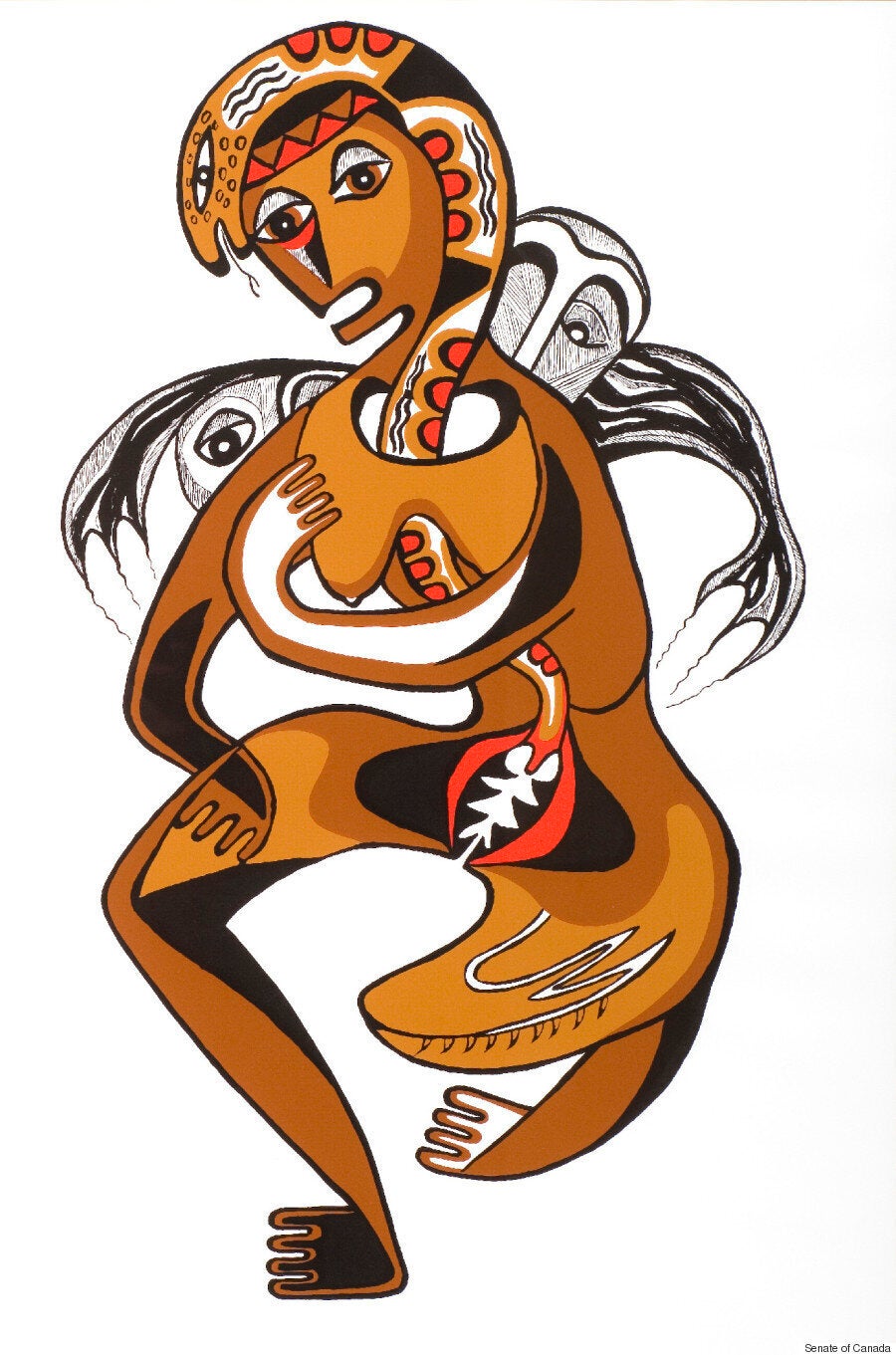
(Image courtesy of © Senate of Canada)
Daphne Odjig, an Ojibway artist from the Wikwemikong Reserve in Ontario, was the first Indigenous woman artist to have her work recognized, in the 1960s. Works such as “Bad Medicine Woman” draw on themes such as mythology and shamanism, but she gives particular focus to women, and their roles as givers of life.
Brian Jungen — “Variant”
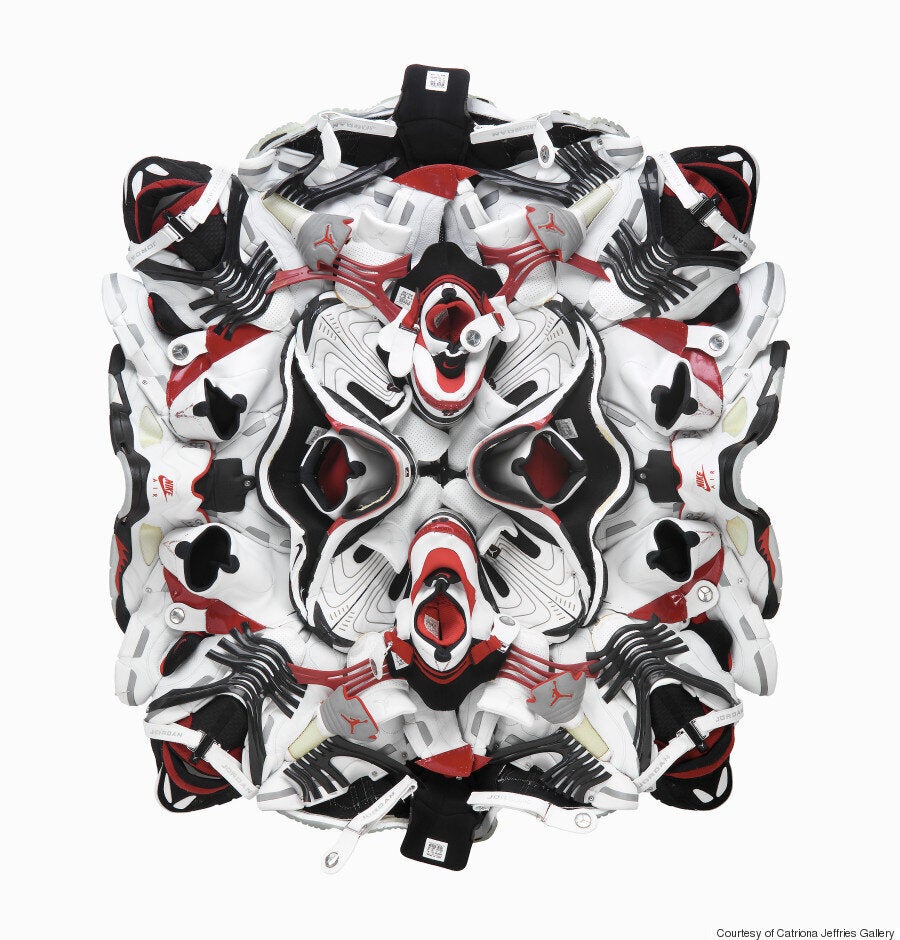
(Image courtesy of Catriona Jeffries)
Sports materials form a key part of the work of Brian Jungen, an artist of Dane-zaa ancestry. The sports industry has appropriated Indigenous terms for teams such as the Washington Redskins and the Cleveland Indians. With “Variant,” he repurposed Air Jordan sneakers to create something resembling a mask.
Robert Davidson — “Eagle Transforming”
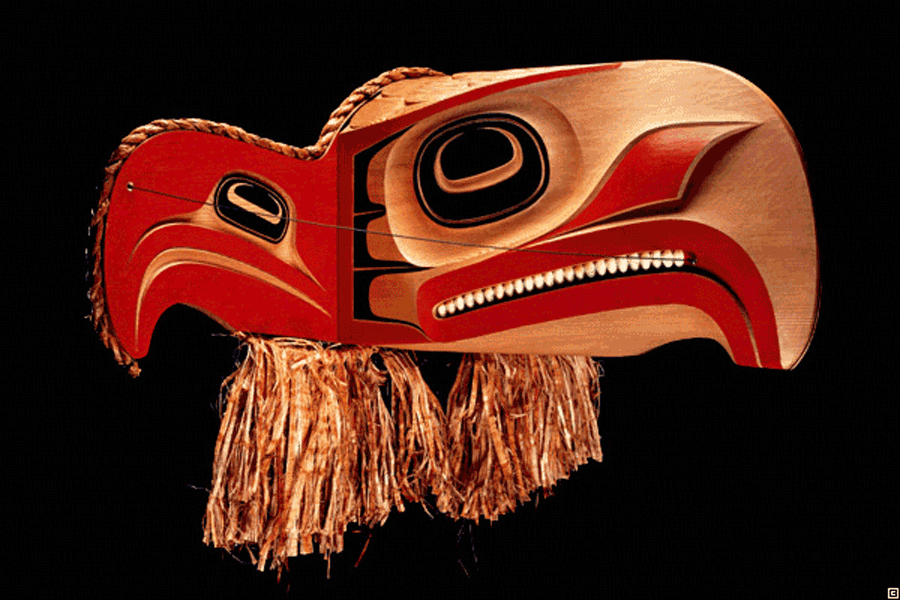
Robert Davidson, an artist of Tlingit and Haida descent, has become one of Canada's most recognized artists with an extensive collection of masks, sculptures, paintings, totem poles and more. This mask depicts the eagle, a transformer figure that rules the sky.
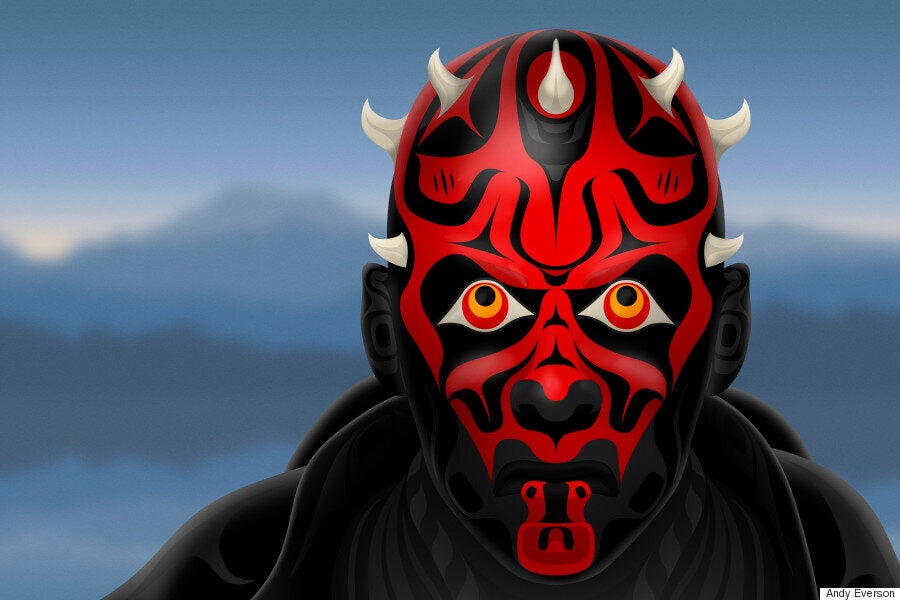
(Image courtesy of Andy Everson)
Pop cultural references take on whole new meanings in the work of Andy Everson, an artist from the K'ómoks First Nation in B.C. His work "Fear" alters Darth Maul, a character from the "Star Wars" universe, to offer scathing commentary on treaty negotiations.
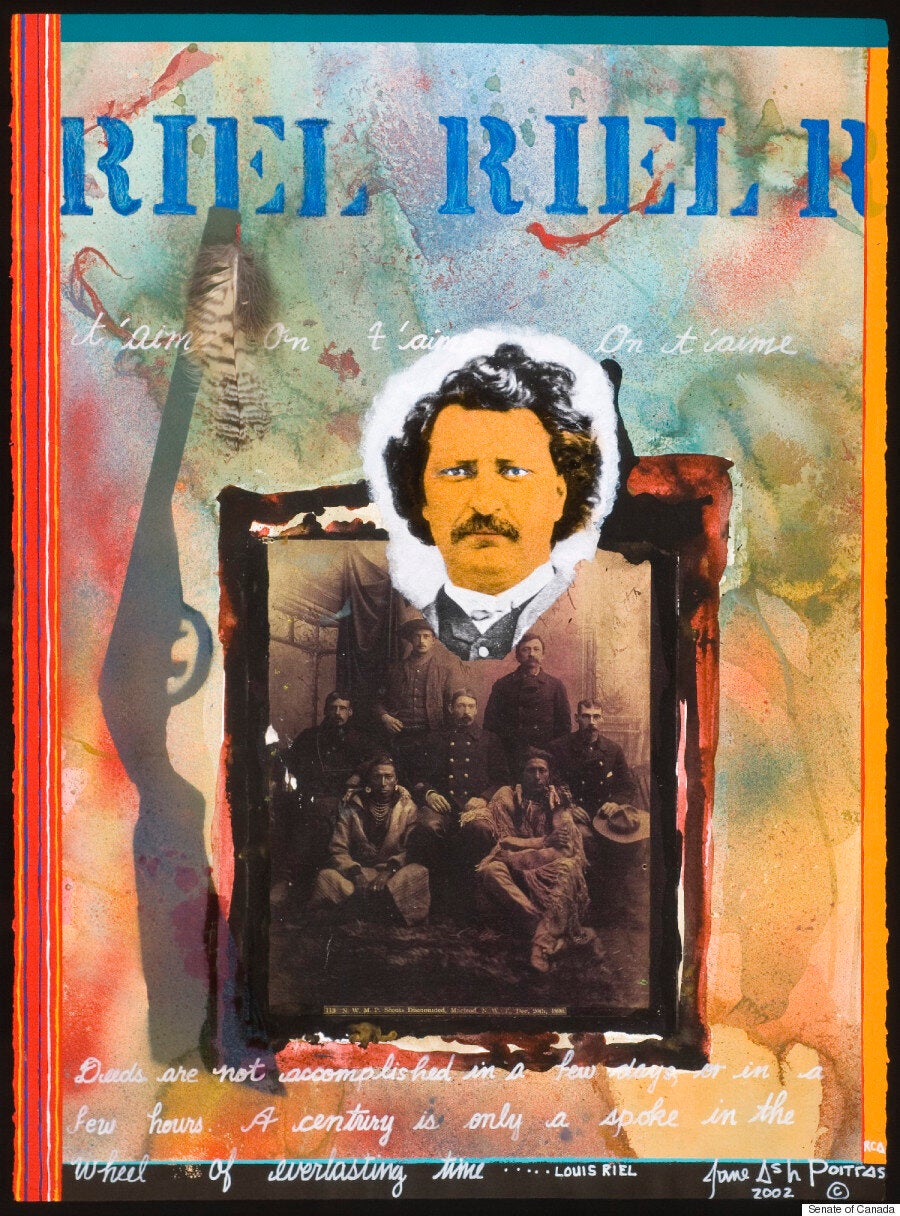
(Image courtesy of © Senate of Canada)
Fort Chipewyan Cree artist Jane Ash Poitras is known for her collage-like technique, which incorporates photos. Here, she pays tribute to Louis Riel, founder of the Metis and the province of Manitoba, by using a photo of the historical rebel leader and another of his provisional government. There is also a rifle with a feather at the mouth of its barrel, symbolizing a conflict that was meant to be carried out peacefully.
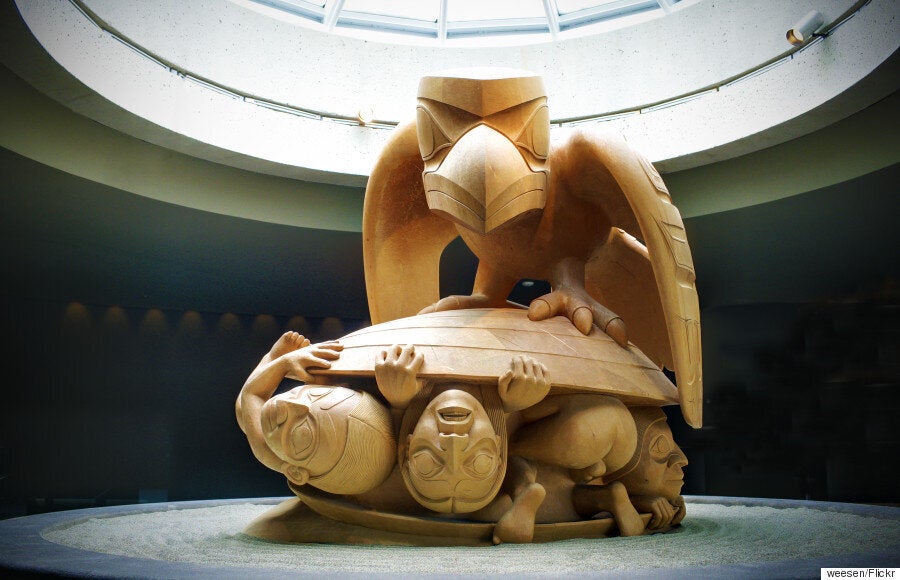
(Image via Flickr user Wee Sen Goh/License)
Haida sculptor Bill Reid (1920 to 1998) has taken on iconic status. One of his most powerful works is "The Raven and the First Men," which can be found at UBC's Museum of Anthropology. It tells the story of the mythical raven, and the part he played in creating humans.
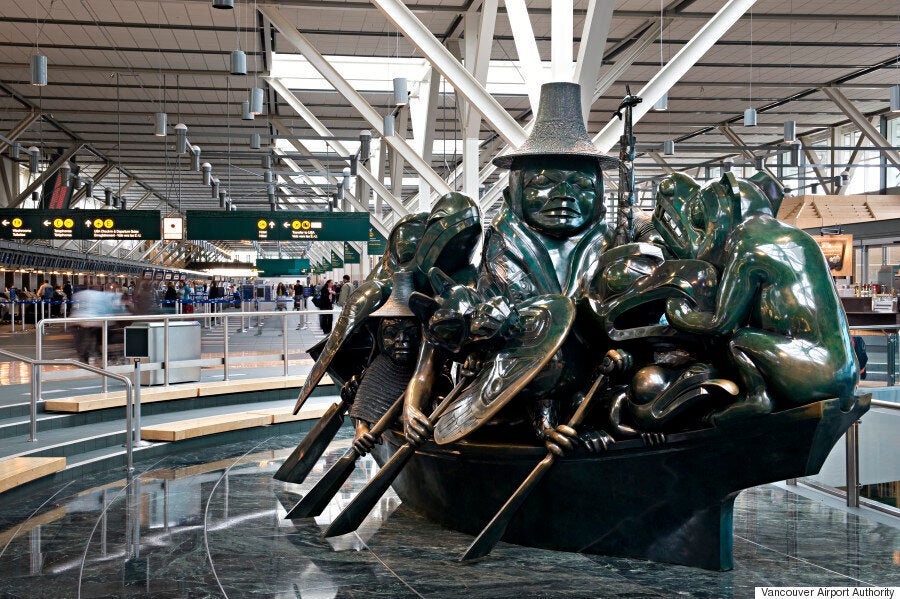
(Image courtesy of Vancouver Airport Authority)
Reid first designed "The Spirit of Haida Gwaii" at the urging of architect Arthur Erickson, who wanted a sculpture for the courtyard of the Canadian Embassy in Washington, D.C. He came up with a canoe that carries 13 mythological Haida figures including the Raven, the Bear and the Wolf. A twin version, known as "The Jade Canoe," is situated in the international terminal at the Vancouver airport.
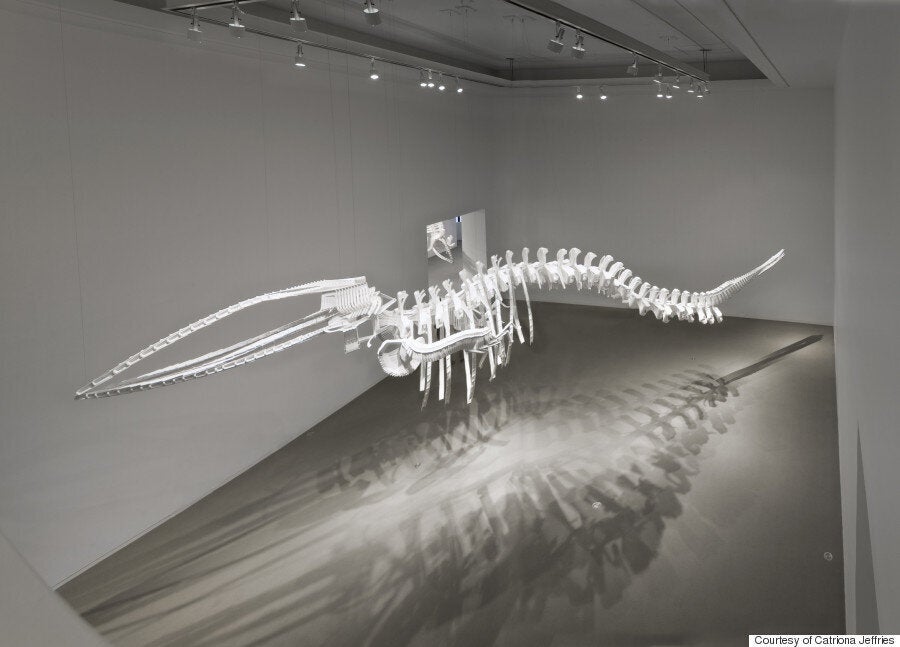
(Image courtesy of Catriona Jeffries)
Brian Jungen has stunned the world with sculptures made of found materials. One of his greatest influences was his mother, who knew how to take objects and apply them to whole new uses. His spectacular "Cetology" depicts a giant whale skeleton made of deck chairs.
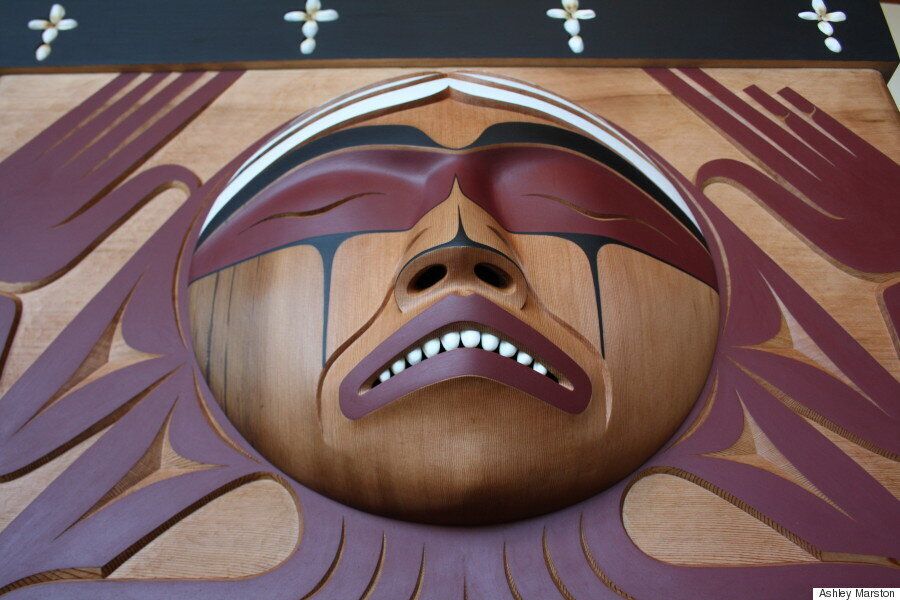
(Image via Ashley Marston)
B.C. Coast Salish artist Luke Marston was tapped by the Truth and Reconciliation Commission to fashion a box as a tribute to residential school survivors. The "Bentwood Box" was made out of one piece of red cedar, its panels carved to represent the cultures of Inuit, Metis and First Nations peoples.
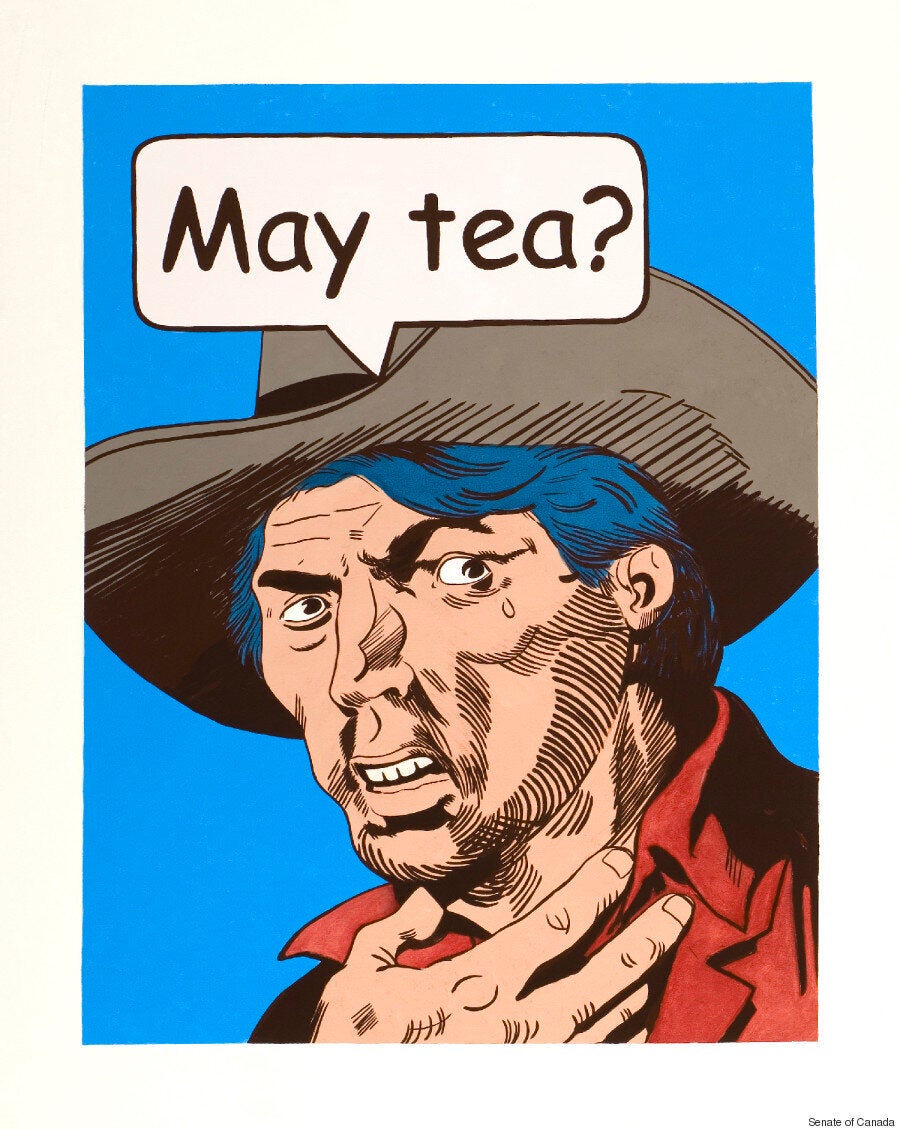
(Image courtesy of © Senate of Canada)
Edmonton-based Metis artist David Garneau drew on the influence of comic illustrations for this painting. It shows a man saying "May Tea?" as though it were a question, depriving it of its meaning, and holding a hand to his neck in a reference to the hanging of Louis Riel.
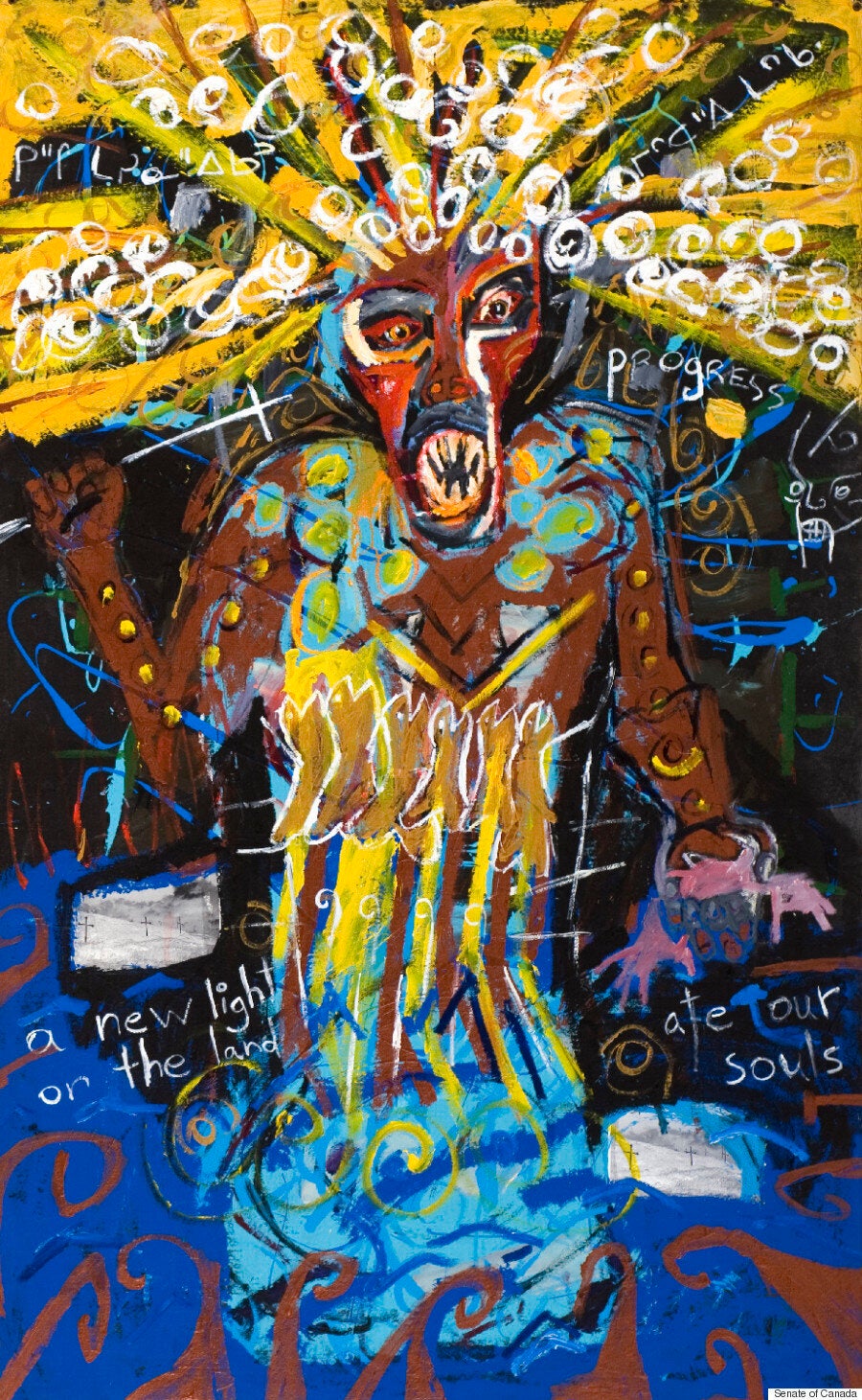
(Image courtesy of © Senate of Canada)
This frightening work, by Neal McLeod of the James Smith Cree Nation in Saskatchewan, depicts the "Wihtikow," a sinister spirit in Cree culture that is known to eat human beings. But this depiction has a twist: the Wihtikow carries a cross in one hand, and human flesh in the other, symbolizing the influence of Christianity, and a people's separation from their own culture.
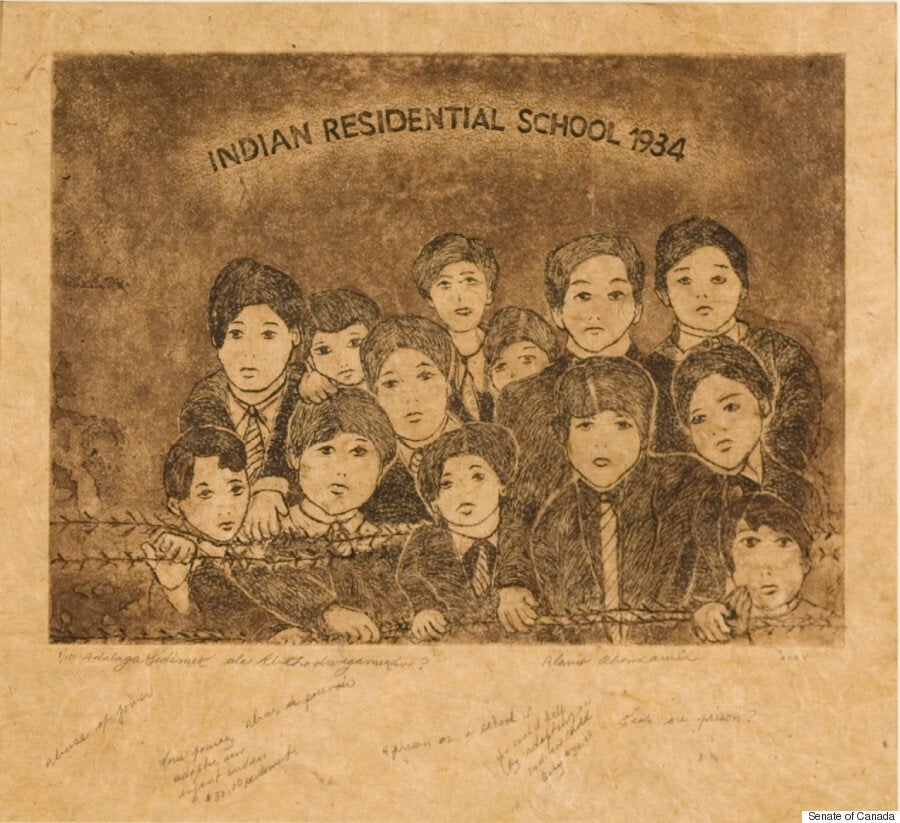
(Image courtesy of © Senate of Canada)
Abenaki filmmaker Alanis Obomsawin is known for documentaries such as "Kanehsatake: 270 Years of Resistance." But she's also a visual artist, as evidenced in this piece, a commentary on the Indian residential school policy that took children away from their homes, their families, and their traditions.
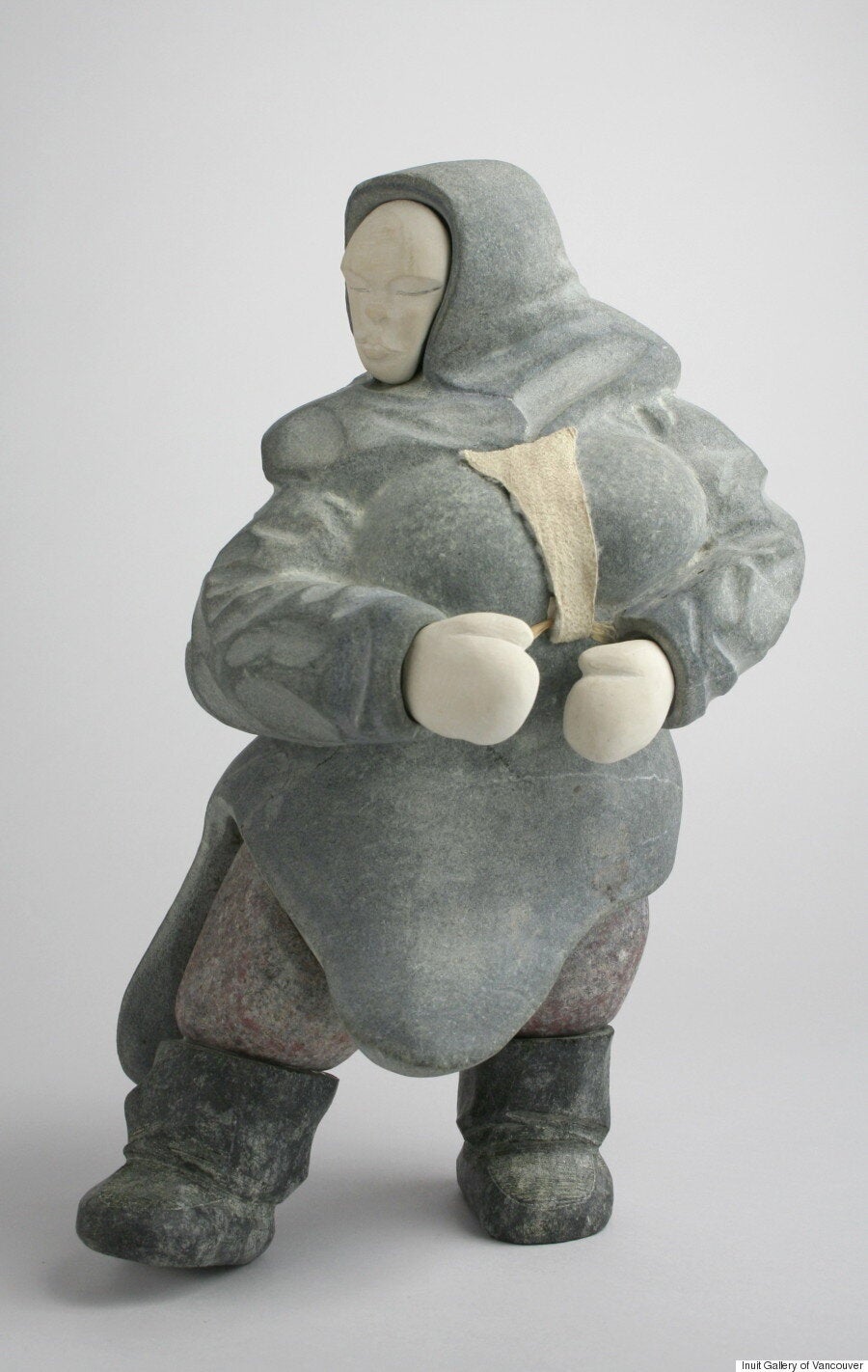
(Image courtesy of Inuit Gallery of Vancouver)
Inuit artist Fred Degrace hails from Coral Harbour, Nunavut. He has produced a series of sculptures that depict a traditional way of life up north, from polar bears to narwhals. His sculpture "Woman," seen above, is made of stone and leather.


